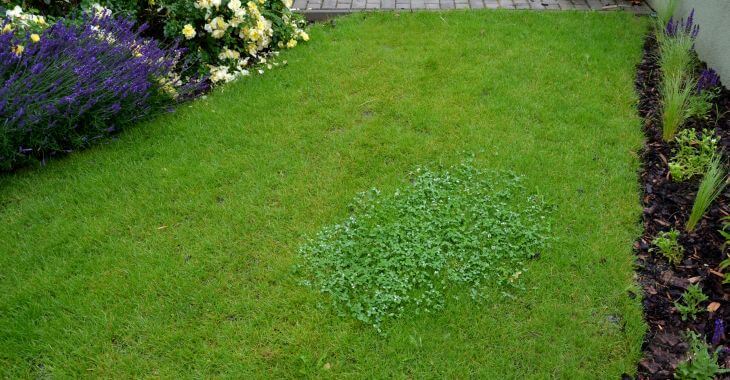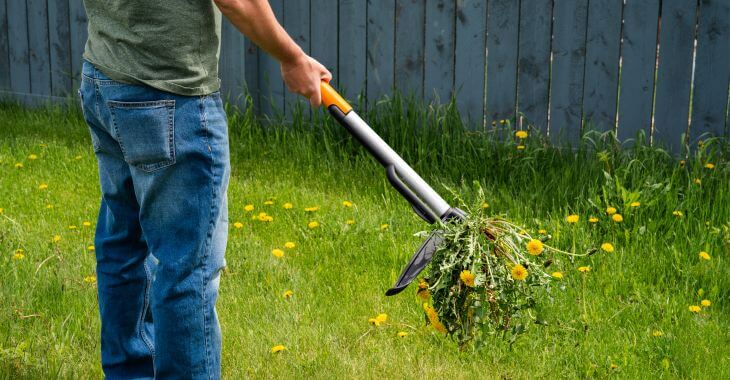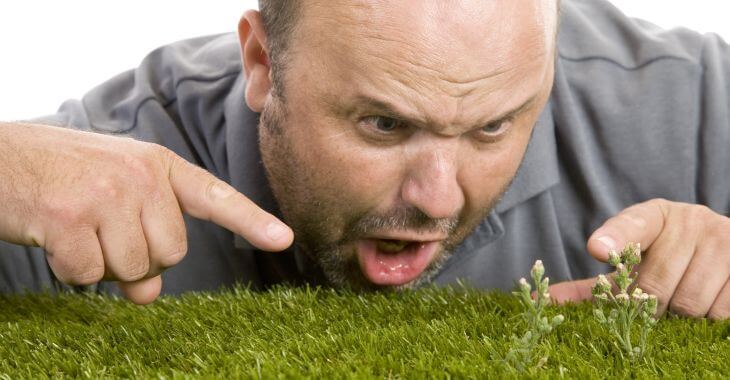How to Get Rid of Common Spring Weeds

Every landscaper and DIY homeowner knows that it takes diligence to keep weeds out of your lawn, garden and landscaped areas. Even in the early spring, weeds are already taking hold before you even get a chance to begin your landscaping or gardening. It can be extremely frustrating!
If you are tired of dandelions infiltrating your lawn or crab grass in your garden, you need a plan to stop these common spring weeds from the beginning. First, you need to know your enemy and find the right strategy to fight these early spring weeds from the beginning of their growing season.
Types of Early Spring Weeds
As soon as the soil is warm enough, your lawn, landscaping beds and gardens will begin to sprout weeds. In most areas of the country, late March is the time when the soil starts to reach 50 degrees or more, making it ready for weed germination. Some of the common spring weeds you need to look for include:
- Dandelion. The most common spring weed is the dandelion. It is one of the most intrusive and aggressive weeds and often the first to pop up its yellow head in the spring.
- Chickweed. Another one of the early spring weeds is chickweed. There are different varieties, but this invasive weed can quickly take over your landscaped areas and lawn.
- White clover. While not everyone has a problem with clover, it can quickly grow in places where you prefer grass or other plants.
- Wild garlic or onion. The tall waxy stems of wild onion or garlic are a common spring weed that grows in clumps. The bulbs come back year after year unless you find the right treatment.
- Groundsel. With its small daisy-like flowers, one of the first early spring weeds in lawn and garden areas is the groundsel.
- Hairy Bittercress. This weed actually begins germinating in the winter, but blossoms in the early spring. This is one of the more difficult weeds to control if you have them in your lawn or garden.
- Moss. While not necessarily considered a weed, moss can take over your lawn quickly. Unless you have grown moss on purpose, it can be a nuisance when it begins killing your grass.
Common spring weeds can vary depending on where you live, but the process of getting rid of these weeds is similar. While gardens and landscape beds can be easier to handle since the ground can tilled to remove weeds quicker, control for spring lawn weeds can be a bit tougher.
Controlling Early Spring Weeds in Your Lawn
Both weeds and grass fight for the same soil in the early spring. To ensure your grass wins both the battle and the war, you need to give it the weapons and support it needs. It is not enough just to sprinkle some weed control product on your lawn – you need a thorough weed battle plan.
- Pre-Emergent Weed Control
- Staying ahead of the early spring weeds is one of the best ways to stop infestation. Pre-emergent weed control products stop weeds from germinating. You want to spread weed-specific pre-emergent before weeds sprout – it will not kill existing weeds. Timing is important – spreading a week too late will not work.
- Weed and Feed Products
- For existing weeds and moss in your yard, weed and feed product can be helpful. You will want to choose a product that targets your common spring weeds. This is a two-for-one product – you can kill the spring lawn weeds while adding fertilizer for your turf.
- Aeration
- Your grass needs to grow a strong root system to choke out the weeds in your lawn. Aeration loosens compacted soil and allows fertilizer, water and grass seeds to find their way down into the soil. This is very important if you have thick thatch or compacted soil, helping improve the health of your lawn.
- Overseeding
- Once your soil is ready, make sure to add more grass seeds to create a thick lawn that will leave no room for common spring weeds. Most overseeding should be done in the early spring to give grass time to achieve mature roots before the hotter, drier weather comes during the summer.
- Mowing
- While it may be easier to mow low, so you do not need to mow as often, it is not necessarily the best way to control weeds. Mowing at a higher level can allow your grass to grow stronger and thicker, but you will need to mow more often. Mow once a week to keep your grass healthy and weeds at bay.

If getting rid of common spring weeds seems like too much of a battle, hire a professional to make it easier. Landscaping companies have the expertise and equipment to quickly prepare your yard to prevent and control early spring lawn weeds and ensure your lawn and gardens thrive.
